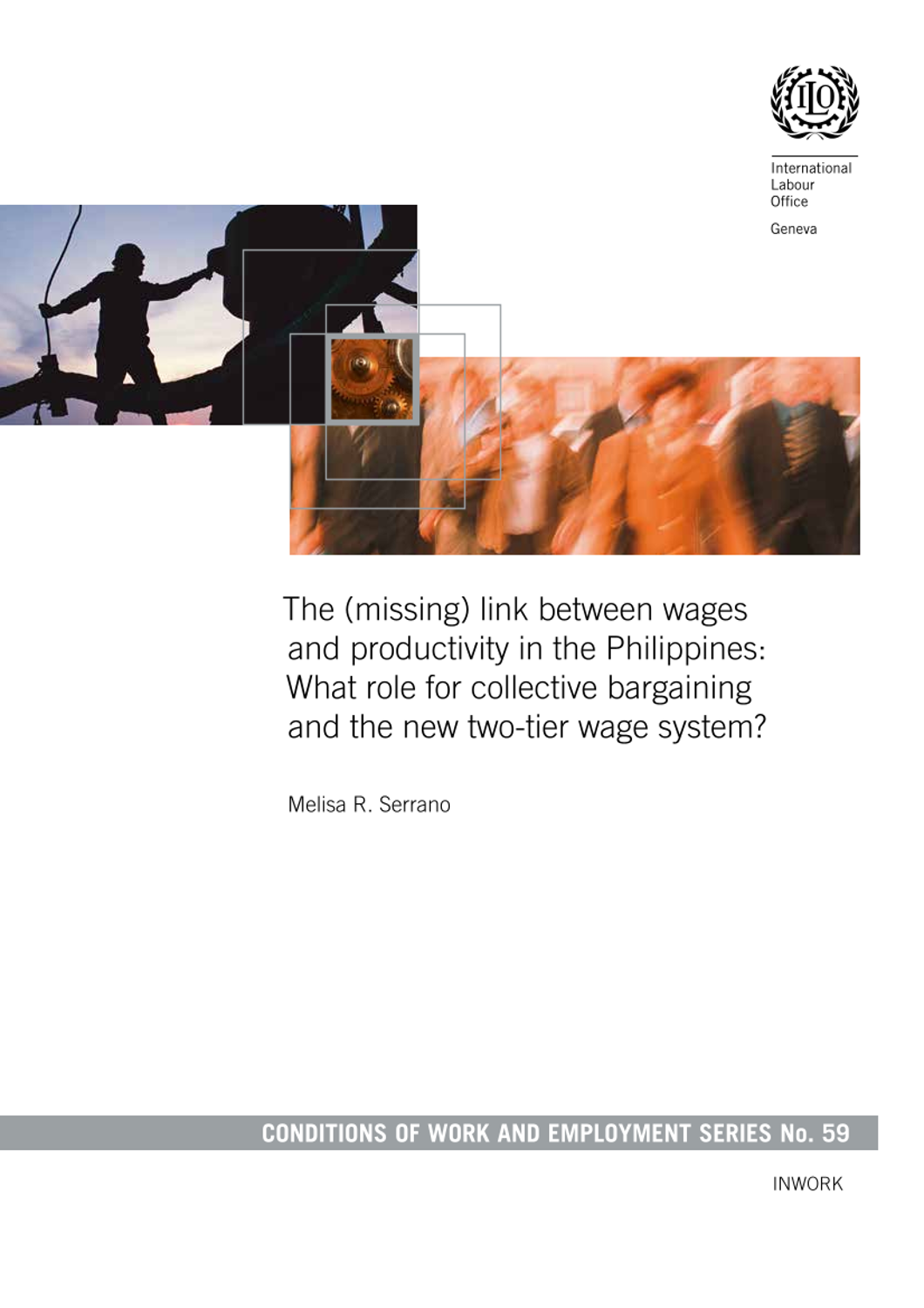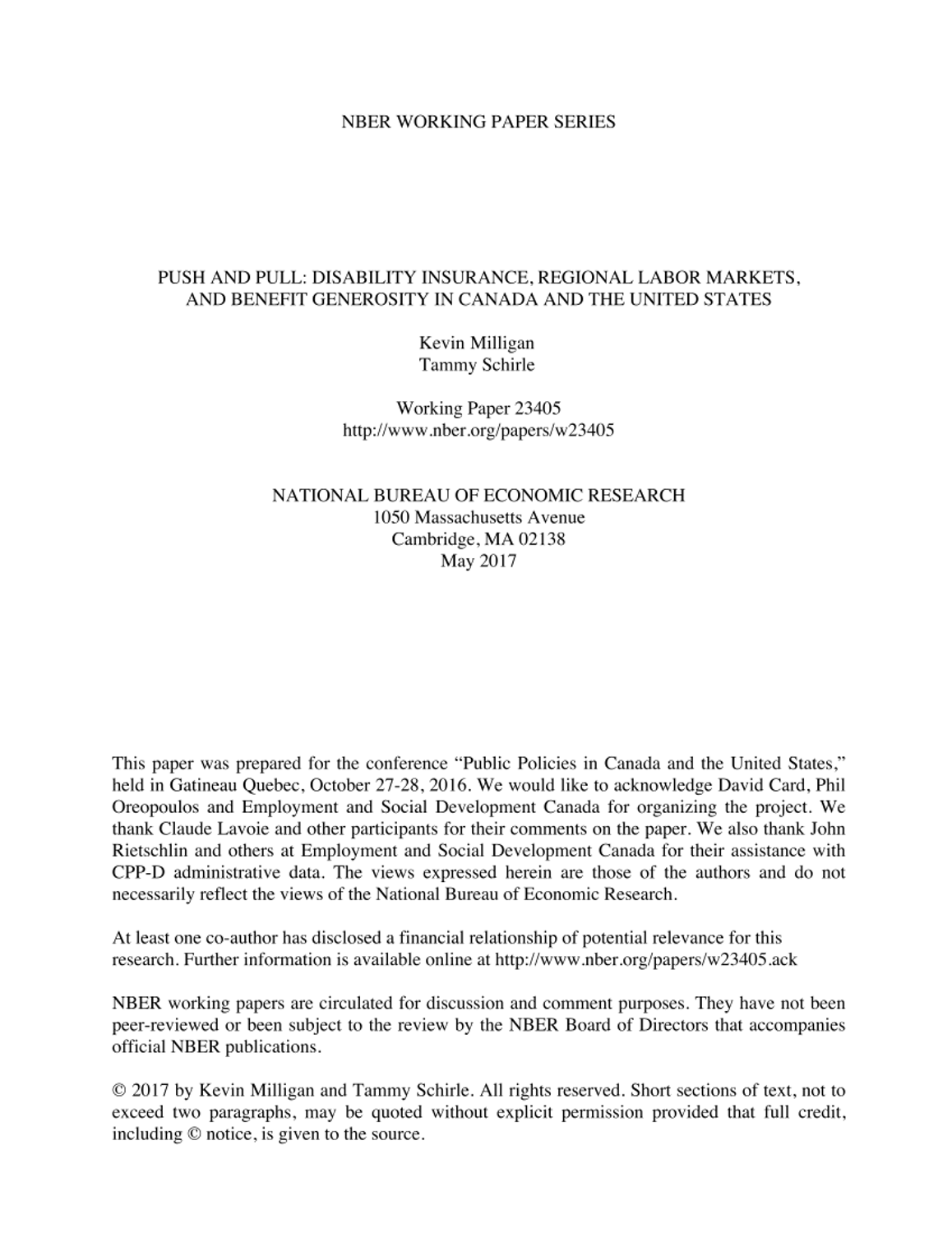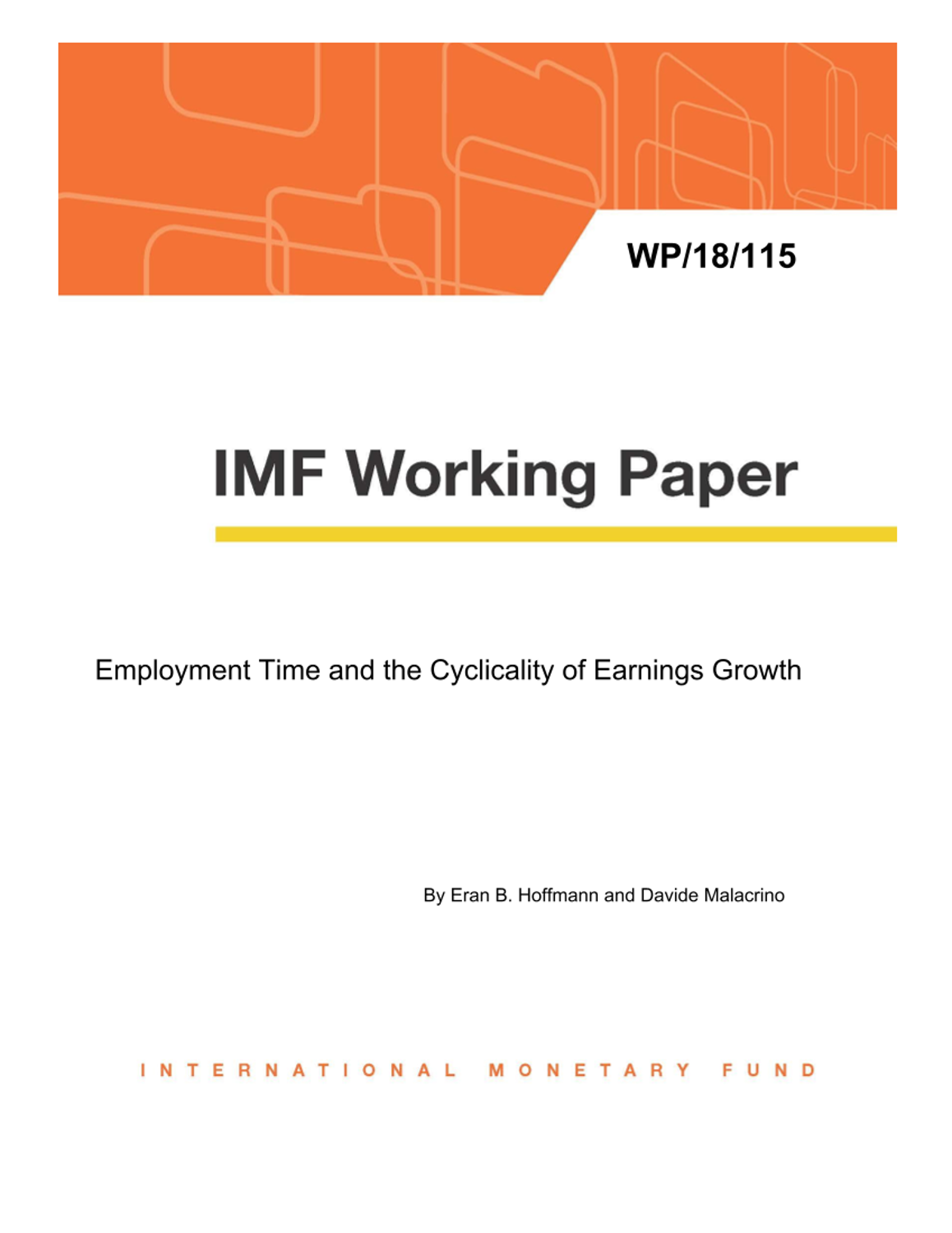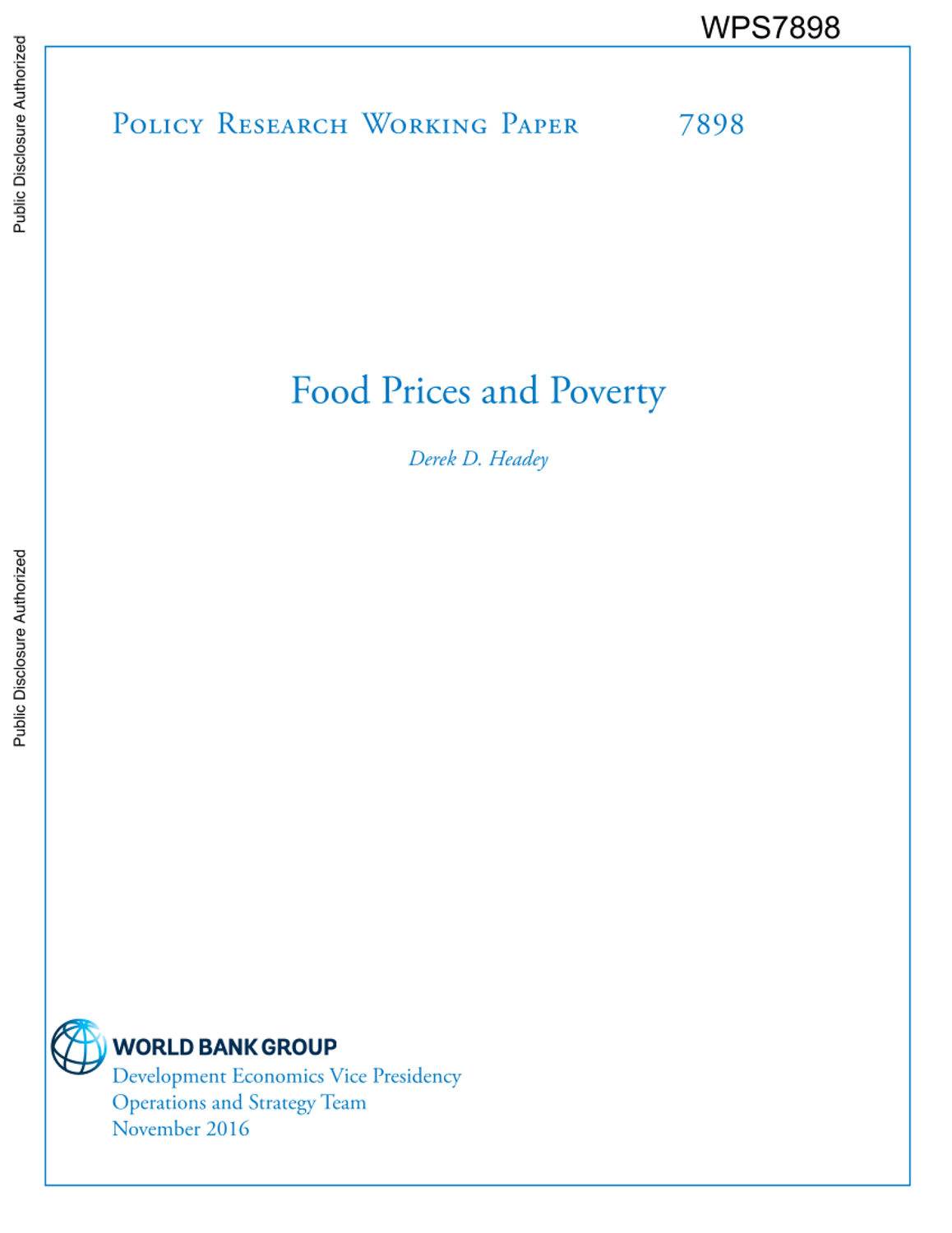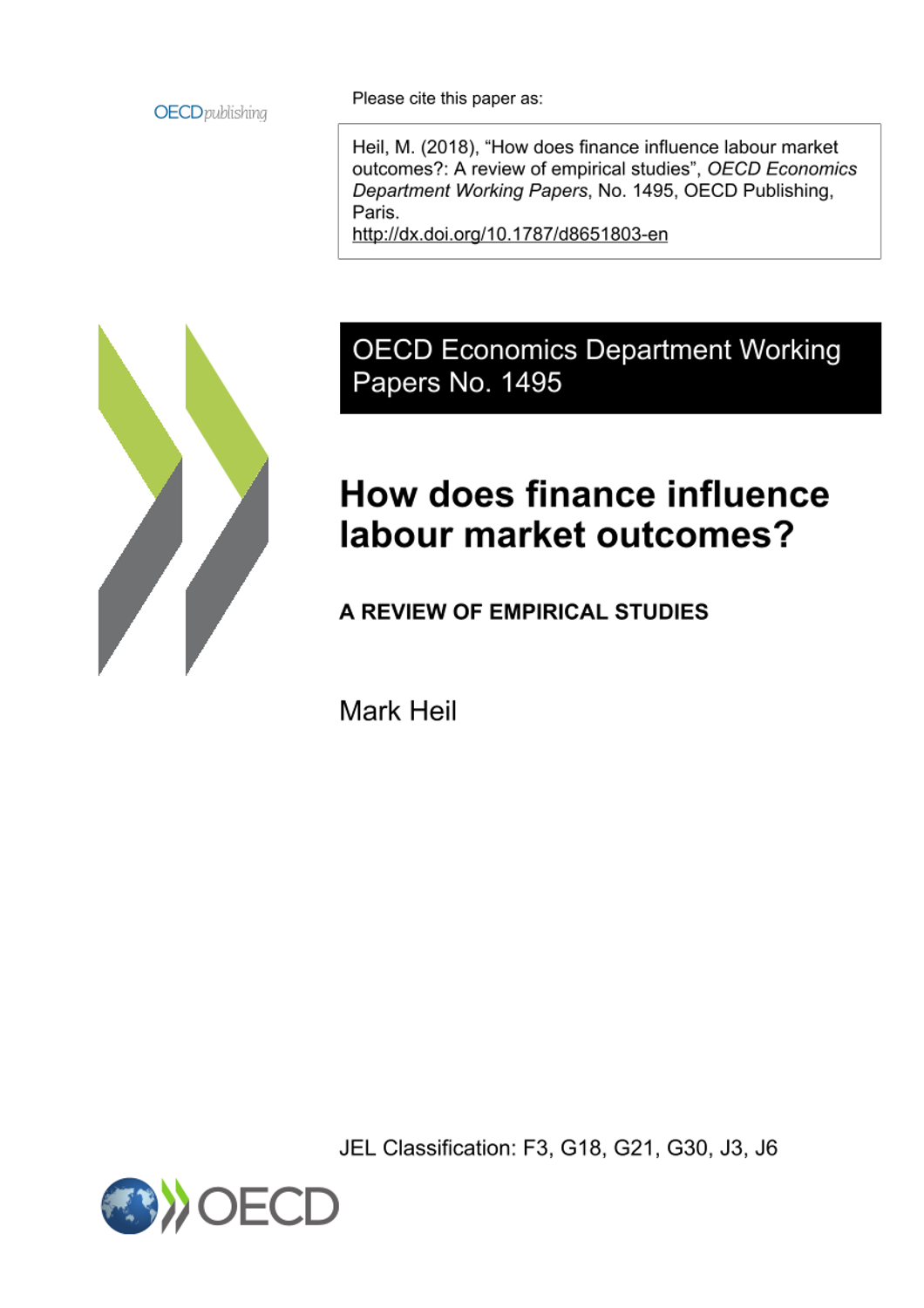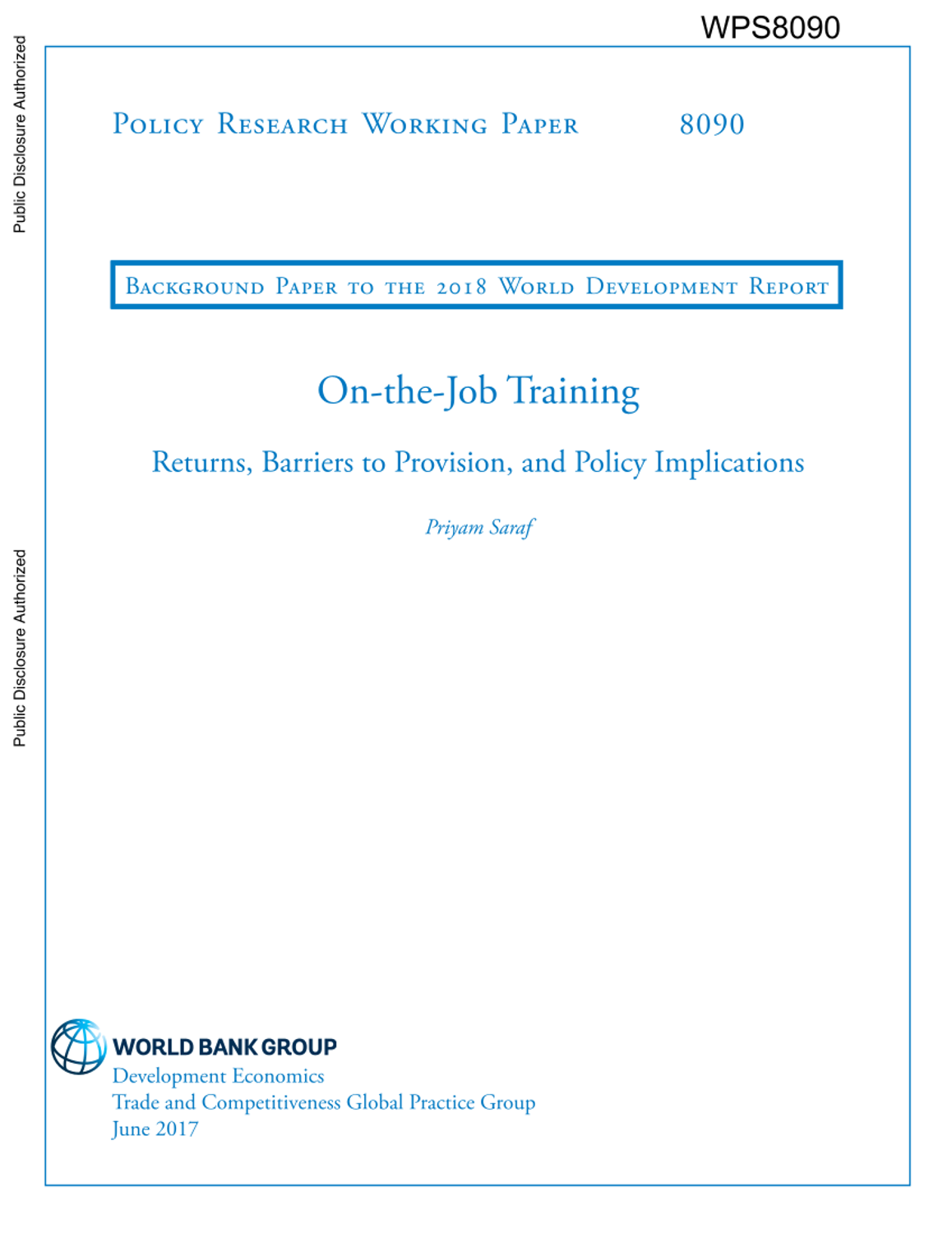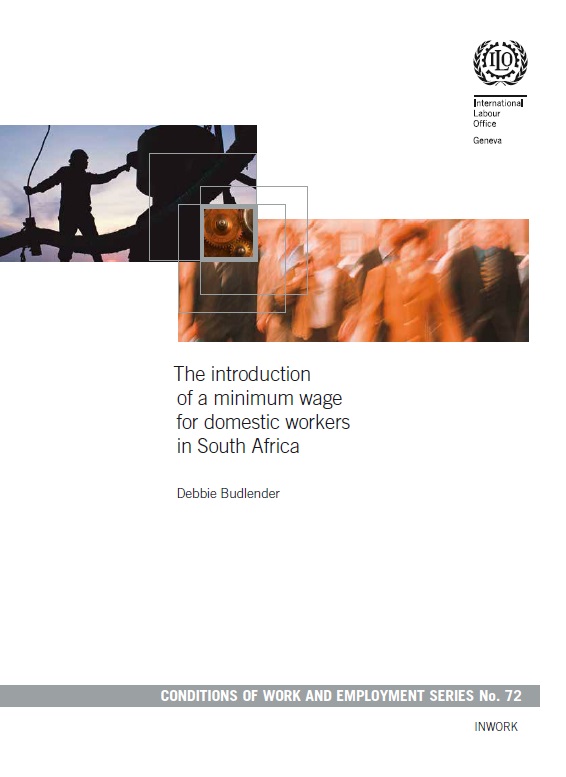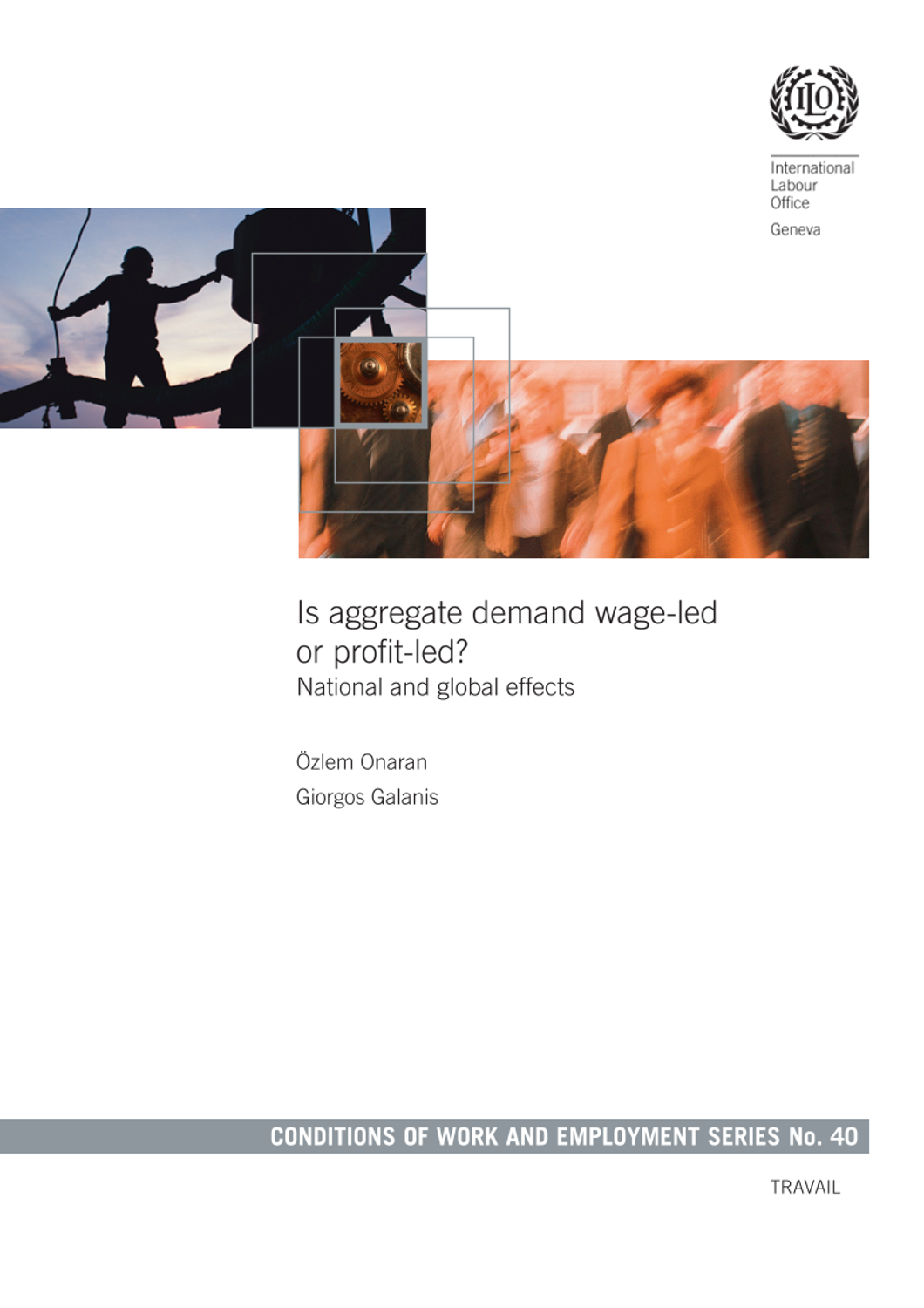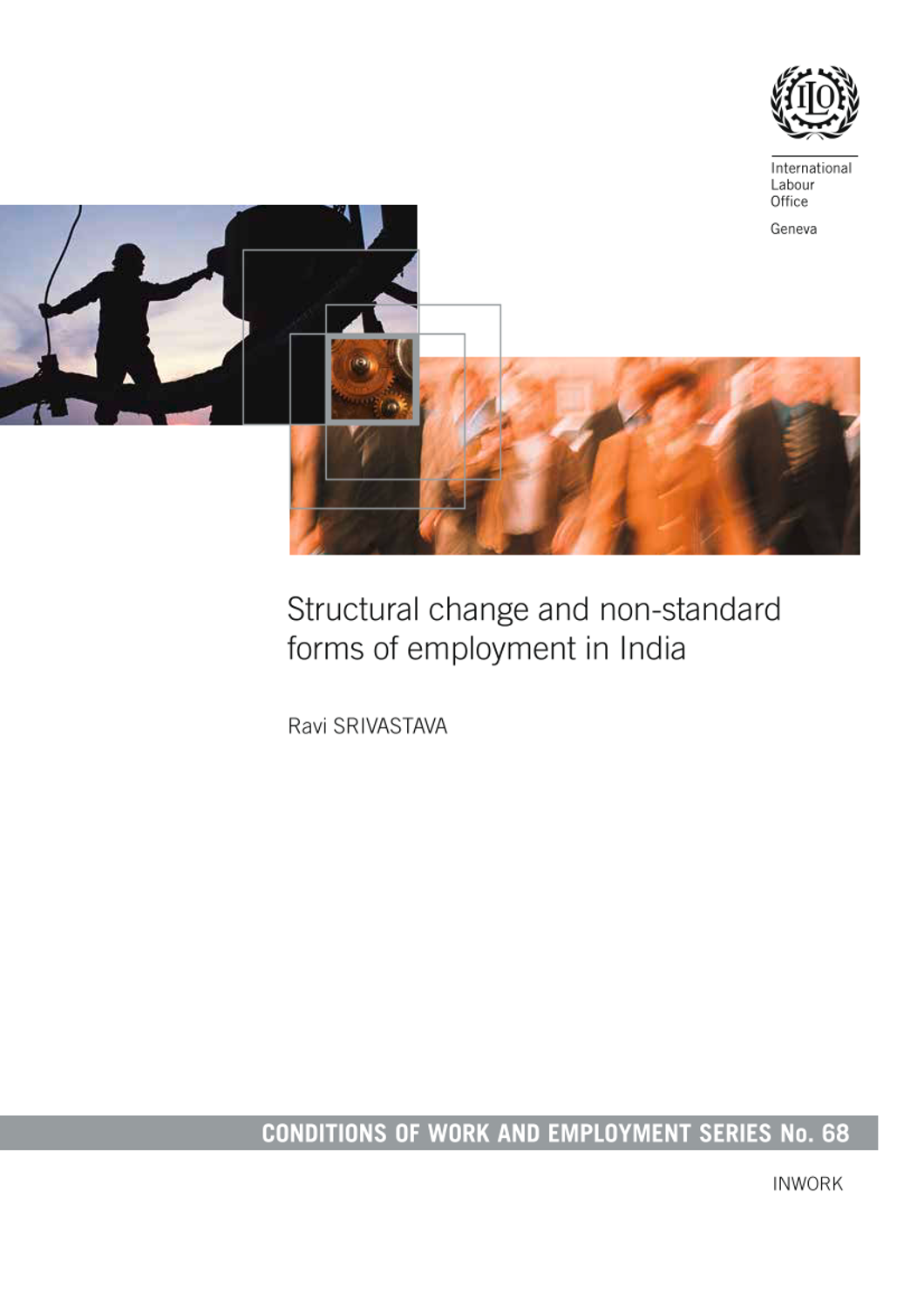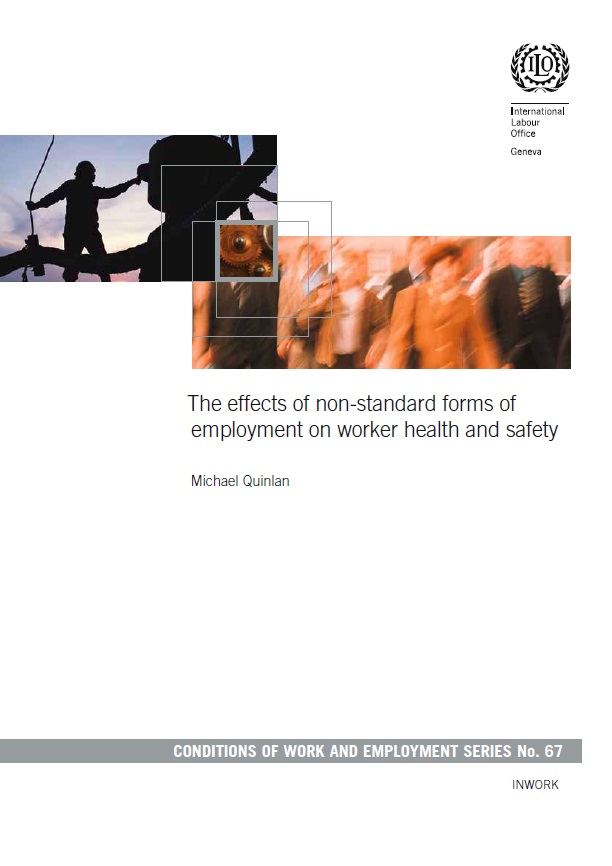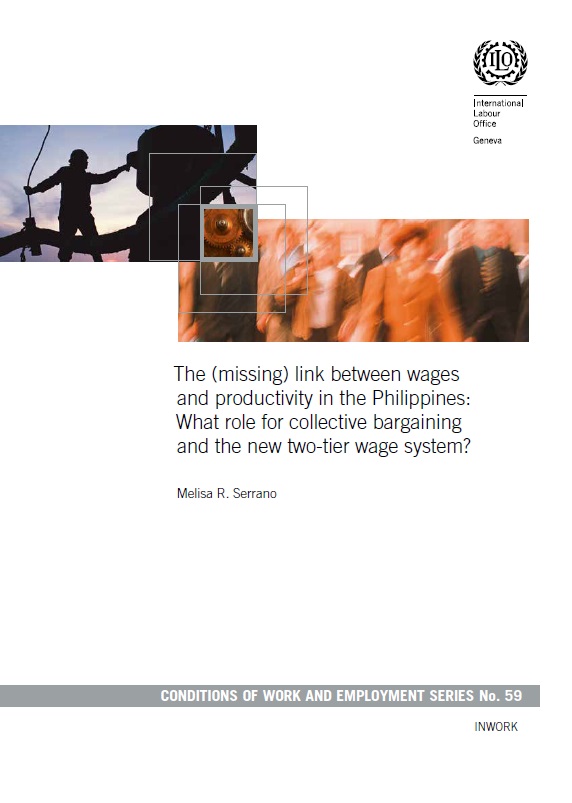
연구보고서Conditions of Work and Employment Series 59
(The) (missing) link between wages and productivity in the Philippines: what role for collective bargaining and the new two-tier wage system?
- 청구기호
- CWES 59
- 발행사항
- Geneva : ILO, 2016
- 형태사항
- 45 p. :. PDF file ;. 508 KB
- 키워드
- Wages, Labour productivity, Economic growth, Wage structure, Trade unionization, Collective bargaining, Philippines
- 바로가기
소장정보
| 위치 | 등록번호 | 청구기호 / 출력 | 상태 | 반납예정일 |
|---|---|---|---|---|
이용 가능 (1) | ||||
| E0002325 | 대출가능 | - | ||
이용 가능 (1)
- 등록번호
- E0002325
- 상태/반납예정일
- 대출가능
- -
- 위치/청구기호(출력)
책 소개
On 28 March 2012, the Philippine Government, through the Regional Tripartite Wages and Productivity Board of Region IV-A, issued Wage Order IVA-15. Its purpose was to further strengthen the policy framework to encourage improvements in productivity, including by enhancing the link between wages and productivity at the enterprise level. This wage order has piloted the implementation of a two-tier wage system in Region IV-A (CALABARZON), which is home to many export-processing and industrial zones. On 1 May 2014, another wage order was issued – Wage Order IVA-16 – clarifying some confusing provisions of the earlier order.
This paper explores how the wage order is being implemented two years (2013 to 2014) after its issuance in Region IV-A by examining the various schemes and processes involved in devising various productivity-based pay schemes through case studies of selected companies in the region. It also examines the extent of coverage of the productivity-based pay tier in terms of the number of participating establishments as of 2014.
목차
INTRODUCTION
1. THE ECONOMIC AND SOCIAL CONTEXT
2. WAGES AND PRODUCTIVITY GROWTH
Declining real wages
Low and stagnant productivity growth
Trends in labour productivity growth
Trends in total factor productivity growth
Declining (non-information technology) capital deepening and increasing total factor productivity in recent years
3. UNIONIZATION AND COLLECTIVE BARGAINING IN THE PHILIPPINES
Declining union density and collective bargaining coverage
4. LINKING WAGES AND PRODUCTIVITY: LAW AND (RARE) PRACTICE
5. THE NEW TWO-TIER WAGE SYSTEM IN REGION IV-A
Tier 1: Setting the regional floor wage
Tier 2: Productivity-based pay
Implementation of productivity-based pay: an update
Labour and employer objections to the two-tier wage system
6. THE POTENTIAL IMPACT OF THE TWO-TIER WAGE SYSTEM IN LINKING WAGES AND PRODUCTIVITY IN REGION IV-A: FINDINGS FROM SELECTED CASE STUDIES
Case 1: Company A
How the existing productivity incentive scheme works
Union involvement and collective bargaining agreement coverage of the productivity incentive programme
Outcomes of the incentive scheme and perfect attendance bonus
Changes in productivity-based pay scheme in view of Wage Order IVA-15
Views on the two-tier wage system
Case 2: Company B
How Company B’s productivity programmes work
Outcomes of the productivity programmes prior to the wage order
Changes in productivity-based pay scheme in view of Wage Order IVA-15
Outcomes of productivity-based pay scheme with Wage Order IVA-15
Views on the two-tier wage system
Case 3: Company C
Mechanics of the productivity-based pay scheme prior to the wage order
Outcomes of the old productivity-based pay scheme
Changes in productivity-based pay scheme in view of the wage order
Views on the two-tier wage system
Lessons and insights from the case studies
7. CONCLUSIONS AND POLICY CONSIDERATIONS
BIBLIOGRAPHY
CONDITIONS OF WORK AND EMPLOYMENT SERIES

